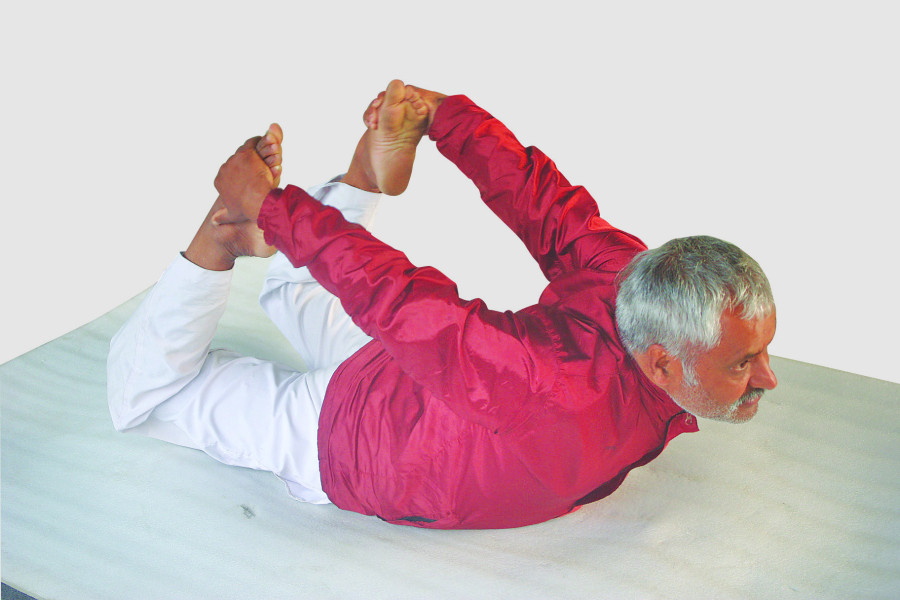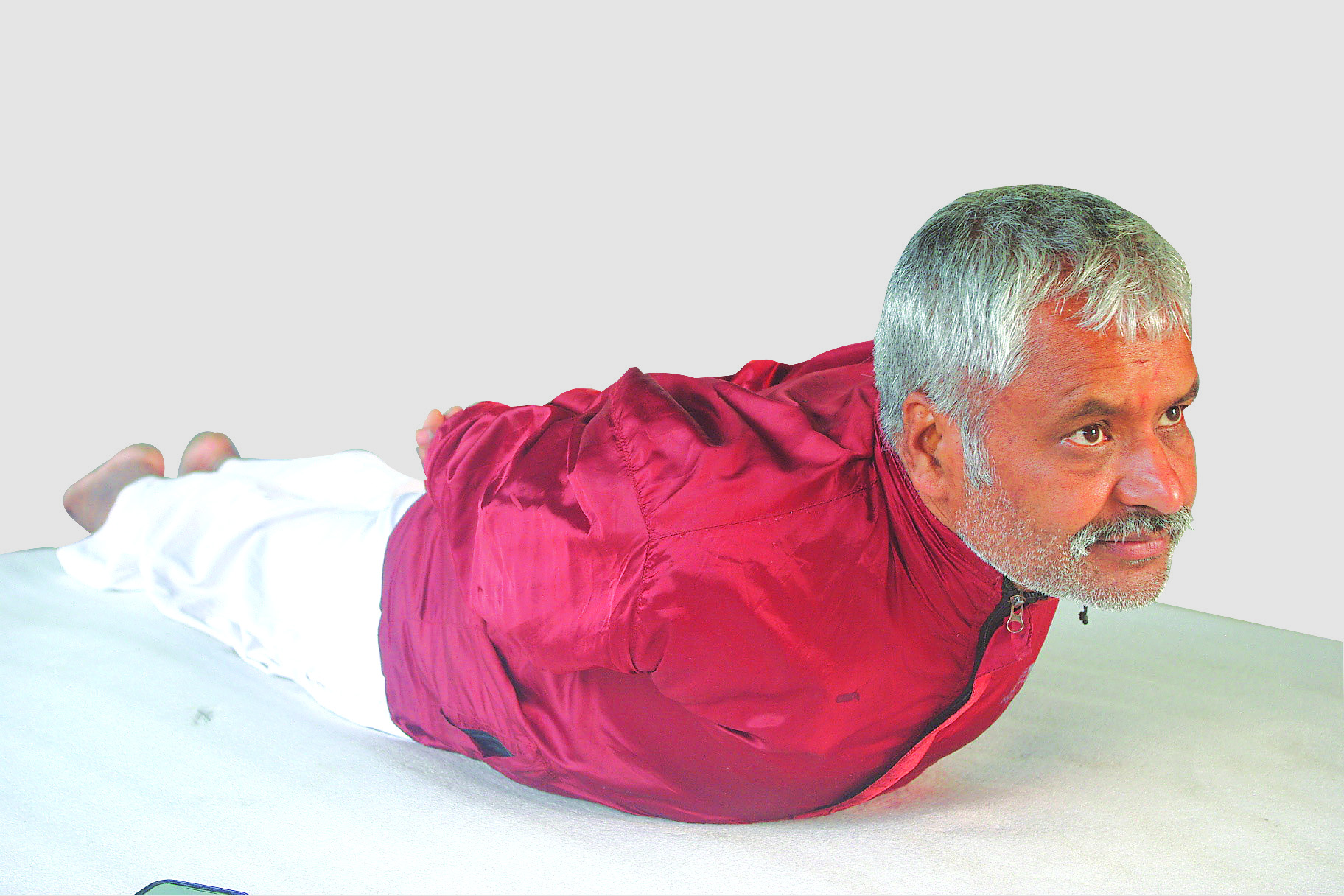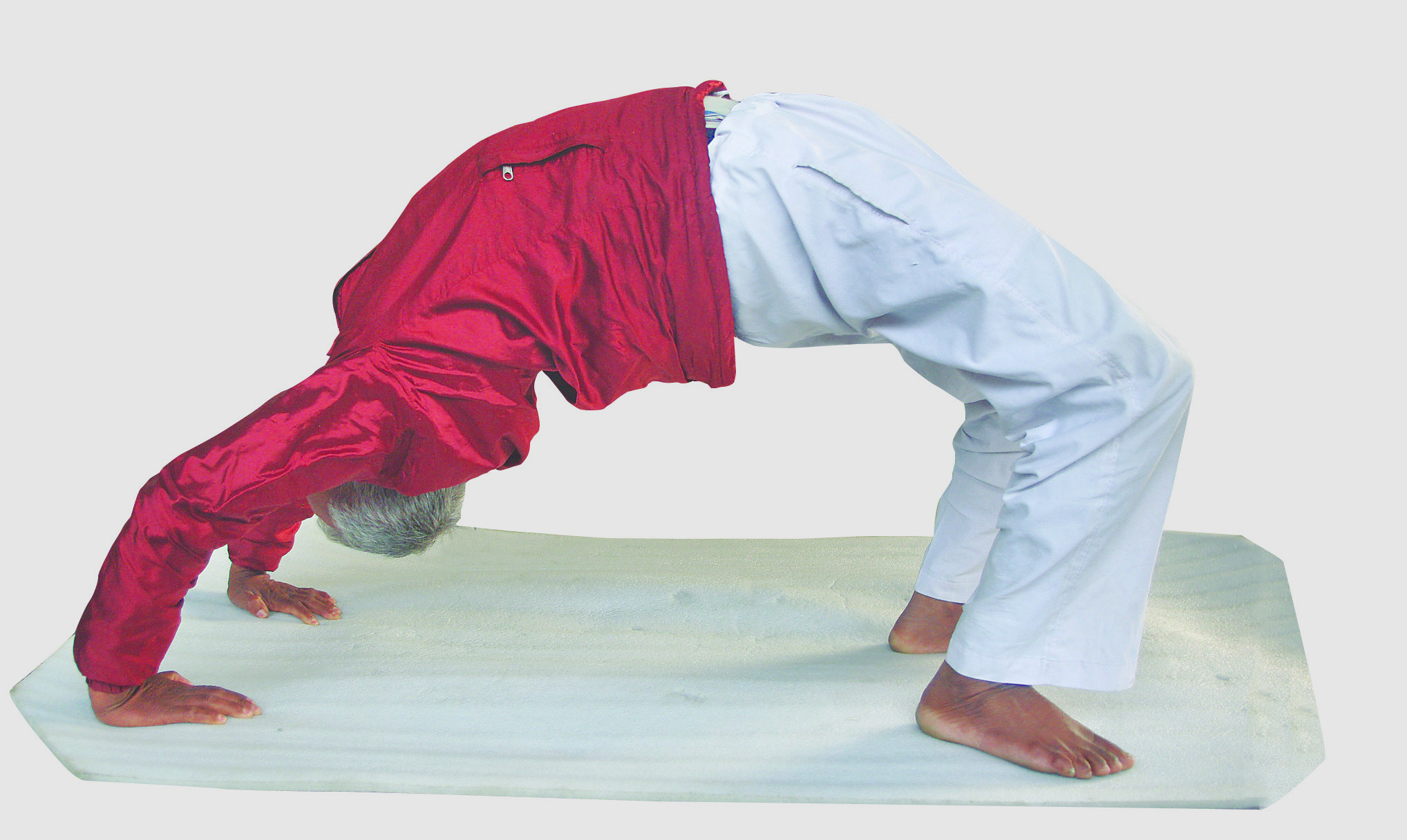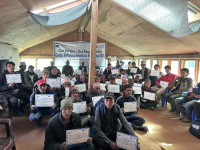Culture & Lifestyle
Yoga to relieve back pain
It is important to recognise your limits while performing yoga poses.
Mimamsha Dhungel
Are you already experiencing back discomfort as a young adult? You’re not the only one. Four out of every five people experience back pain at some point. According to a study published in UpToDate, this figure is 84 percent of adults. Back discomfort has become widespread starting in young adulthood, whether due to poor posture among sedentary office workers who spend hours in front of a computer desk or people who claim they do not have time to exercise.
“It’s strange to see how many have neglected their health due to the rising hustle culture,” says Purushottam Pathak, an international yoga teacher certified by Global Society for Peace and Spiritual Science, Patanjali Yogpeeth and the Maha Yoga Global College, Australia.
Pathak explains that a few basic measures of regular exercise can help you overcome 50 percent of your back problems. “When I first started experiencing back pain, I couldn’t even walk 15 steps properly. I was on bed rest for three days. While resting, I started doing some asans, and on the fourth day, I walked almost 2 kilometres,” Pathak says.
Pathak has spent the last eight years teaching and instructing residents of Satungal and Chandragiri, Ward 5, and he has watched people devote their time to yoga to cope with their busy lives every day before sunrise. He lists a few Yoga exercises that can play an essential role in overcoming back pain.
Makarasan

The crocodile pose is known as Makarasan. The word’s etymology is in Sanskrit, where ‘makar’ means crocodile and ‘asan’ means posture or stance. This asan is suitable for beginners. It is a posture associated with the nervous system’s relaxation and, thus, incredibly restorative. Makarasan is used in between back-strengthening poses to rest. It is the most straightforward exercise to perform as you only need to lie down on your stomach and form a 45-degree angle with your thigh and calf. Let your left leg stretch behind you, place your left cheek on the mat, and turn your gaze to the right. This exercise releases a lot of your back tension.
Salabhasan

This yoga pose is known as the locust pose, as the name is made up of two words—‘salabha’ meaning grasshopper, and ‘asan’, meaning pose. Salabhasan is known to improve your flexibility and body coordination. This pose helps to stimulate and strengthen your back muscles and stamina. You must lie on your back to perform this asan. Your legs should be straight and lifted, and your shoulders tightened back. You must face down with your palms lifted. With your head raised, you are looking straight ahead. This is a backbend or spine stretch that requires the strength of the upper and middle back muscles. The goal is to lift the weight of your legs as high as possible from your starting position.
There are numerous variations of this pose that you can perform. The Ardha Salabhasan is a pose in which you raise one leg and the opposite arm at the same time. You can rest your free arm on the floor or fold it over your back. Steps can also be used to perform the cobra pose known as Bhujangasan. First, you place your arm under your torso, pointing straight down at your feet. Your palms are facing down, and your chin is resting on the floor. Then, alternately lift the left and right legs. You could also lift both legs at the same time.
Markatasan

Marakatasan is derived from the Sanskrit word ‘marakat’ meaning monkey. Markatasan is known as the monkey yoga pose because it is performed while lying down in a supine position and twisting your body. This asan enhances spine agility and relieves pain and discomfort in the lower back.
To do this pose, lie on your back with your arms open to the sides. Raise your arms to shoulder height. To fold the legs, you first bend your knees. The right leg is then lowered rightways with a bent knee. You must also lower the left leg to ensure the left knee parallels the right ankle. You then twist your neck to the left, turning your head. You hold the posture for a few seconds before returning to the centre. Finally, you switch sides and repeat the pose.
Chakrasan

Chakrasan comes from the Sanskrit word ‘chakra’, which means wheel. This yoga pose is extremely beneficial because it increases spine flexibility. This exercise stimulates and balances all internal organs by extending the upper body. Chakrasan improves your sense of well-being while also benefiting your glandular system. This asan is effective for women dealing with menstrual problems. Chakrasan helps with good posture and is especially beneficial for people who spend a lot of time sitting. You can also perform Ardha Chakrasan—the half-wheel pose, which is comparatively easier to perform.
To do Chakrasan, you must lie supine with your arms behind your body. The next step is to bend your knees and place your feet on the floor close to your buttocks. You then carefully raise your arms above your head and place your palms near your shoulders on the floor. The fingers are pointing towards the body, and the elbows are pointing up. Your entire body weight is lifted high, leaving only your hands and feet on the floor. You maintain the position by looking down at the floor and breathing in a relaxed manner.
Chakrasan is an advanced yoga pose that many might not be able to perform. This pose should be avoided by women after the 3rd month of pregnancy. You should not perform Chakrasan after any abdominal surgery or if you have any other chronic back problems.
Advanced poses
There are many other forms of Yoga postures like the Ardha Chandrasan, Padvritasan, and Ardha Halasn, which are on the advanced level. “It is very important to recognise your limits while performing the yoga poses,” Pathak says, adding that you can’t just force yourself to do the asans despite your body’s warning signs.” He believes that taking pauses between poses is essential. It is a strategic exercise to strive for better while balancing your flexibility and advancement constantly.
At the office
According to Pathak, it is critical for most people who spend a lot of time sitting to be aware of their posture. To avoid a slew of back-related issues, avoid slouching, slumping, or any other forms of bad body postures. Muscle tension, back pain, joint pain, and decreased circulation can all result from poor posture. “You can make your own DIY back belt out of a scarf or a shawl to ensure that you maintain good posture,” says Pathak.
While sitting, it is essential to move and release the accumulated tension. “Stretch your hands and shoulders. You should stretch sideways on a regular basis and focus on good posture to avoid lower back pain,” Pathak adds.




 18.12°C Kathmandu
18.12°C Kathmandu















